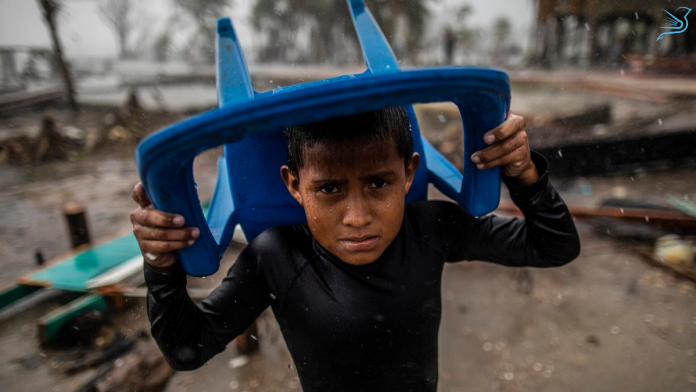Hello dear aspirants!
In this blog, we will discuss the Children’s Climate Risk Index by UNICEF. This blog will provide you with all information about that for your exam.
The United Nations Children’s Fund (UNICEF) in collaboration with Fridays for Future launched a new report named “The Climate Crisis Is a Child Rights Crisis: Introducing the Children’s Climate Risk Index”.
The Children’s Climate Risk Index (CCRI)
It is the first focussed and comprehensive analysis of climate risk from a child’s perspective by UNICEF. CCRI provides the comprehensive view of children’s exposure and vulnerability to the impacts of climate change. It ranks countries based on children’s exposure to climate and environmental shocks, such as floods, cyclones and heatwaves, as well as their vulnerability to those shocks, based on their access to essential services. This report presents a conceptual framework, a tool and an initial assessment at a global level of children’s exposure and vulnerability to climate and environmental hazards, shocks and stresses.
Children are more vulnerable to environmental and climate shocks than adults for many reasons including physical and physiological vulnerability and an increased risk of death.
Approximately 1 billion children (nearly half of the world’s children) live in extremely high-risk countries.
According to UNICEF report, Children in India are at extreme high risk of impacts of climate crisis. India is among four South Asian countries where children are most at risk of the impacts of climate change threatening their water and sanitation, healthcare, education, and protection. In India flooding and air pollution are repeated environmental shocks. Such shocks lead to socio-economic adverse consequences for children. It is estimated that more than 600 million Indians will face ‘acute water shortages’ in the coming years, while at the same time Flash Flooding is to increase significantly in India’s urban areas once the global temperature increase rises above 2 degrees Celsius.
Four South Asian Countries where children are at high-risk are Afghanistan, Bangladesh, Pakistan and India. Afghanistan was ranked at 25th position, Bangladesh at 15th, Pakistan at 14th while India at 26th.
Compared to adults, children require more water and food per unit of their body weight, are less able to survive extreme weather events, and are more susceptible to toxic chemicals, temperature changes and diseases, among other factors.
The Children’s Climate Risk Index (CCRI) reveals:
- Highly exposed to coastal flooding – 240 million children
- Highly exposed to riverine flooding – 330 million children
- Highly exposed to cyclones – 400 million children
- Highly exposed to vector borne diseases – 600 million children
- Highly exposed to lead pollution – 815 million children
- Highly exposed to heat waves – 820 million children
- Highly exposed to water scarcity – 920 million children
- Highly exposed to exceedingly high levels of air pollution – 1 billion children
Recommendations by UNICEF:
- Increase investment in climate adaptation and resilience in key services for children.
- Countries must cut their emissions by at least 45% (compared to 2010 levels) by 2030 to keep warming to no more than 1.5 degrees Celsius for reduce Greenhouse Gas Emissions.
- Provide climate education and greens skills to children, critical for their adaptation to and preparation for the effects of climate change.
- Include young people in all national, international and regional climate negotiations and decisions.
- Ensure the recovery from Covid-19 pandemic is green, low-carbon and inclusive, so that the capacity of future generations to address and respond to the climate crisis is not compromised.
This is all about the Children’s Climate Risk Index. We hope that this blog was informative. For more information regarding the preparation, try Hranker Study Material.
Also, try the Hranker Test Series for enhancing your speed and accuracy.
Thank you!




